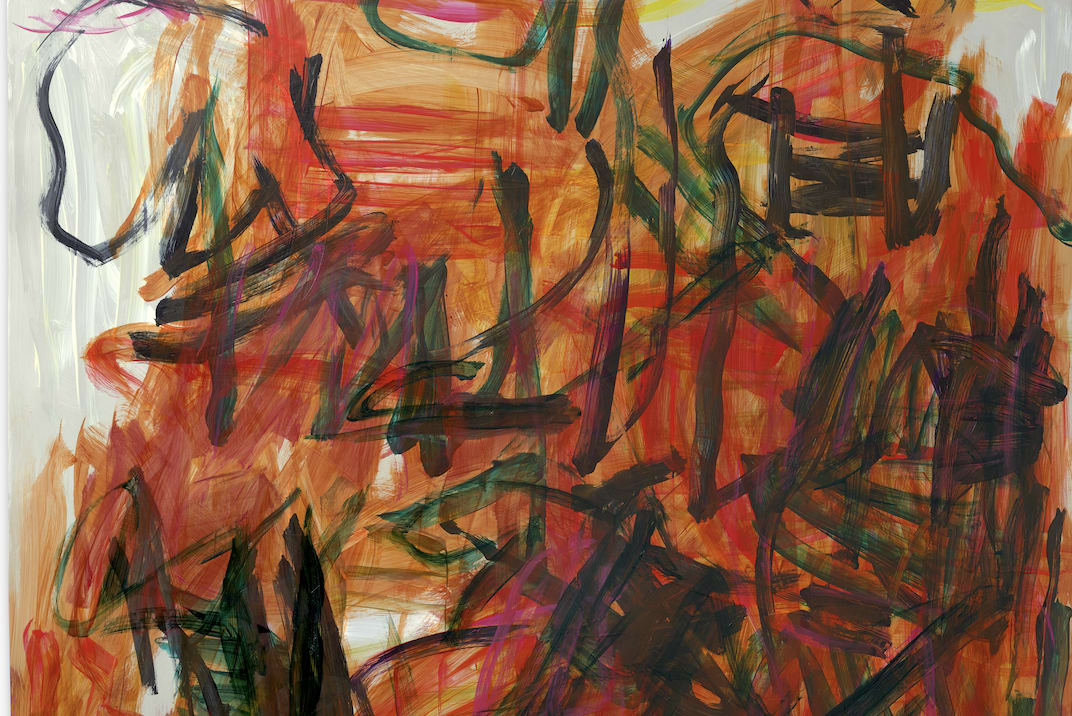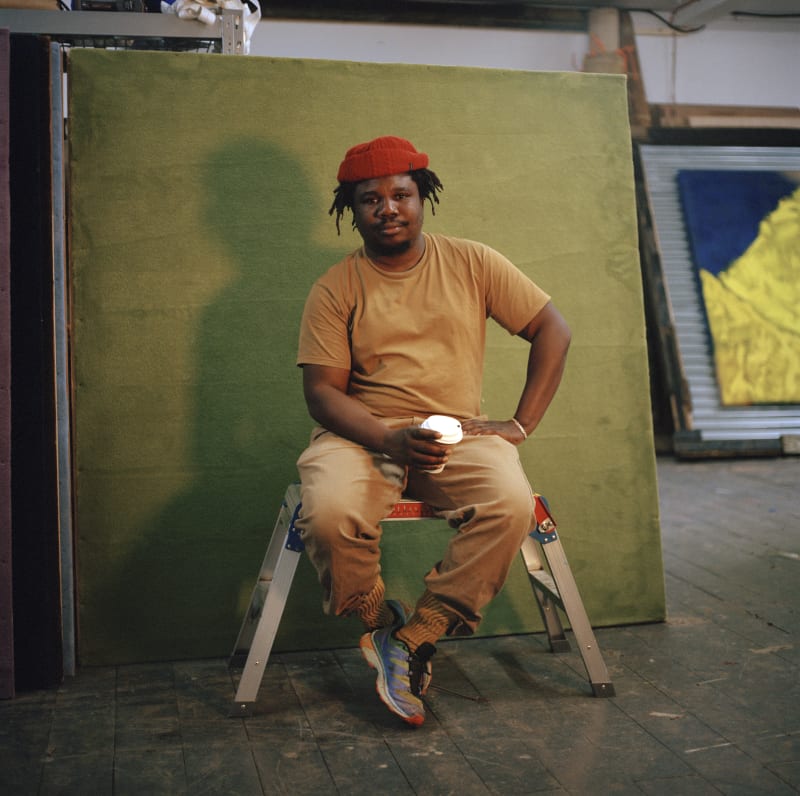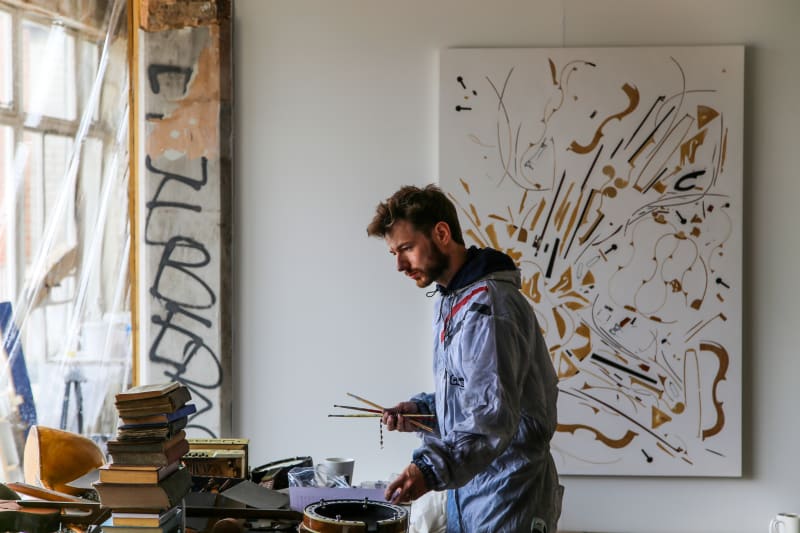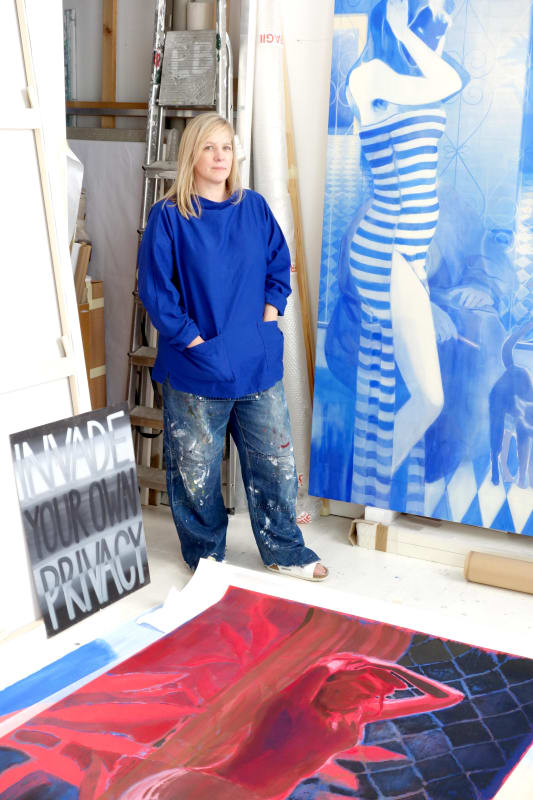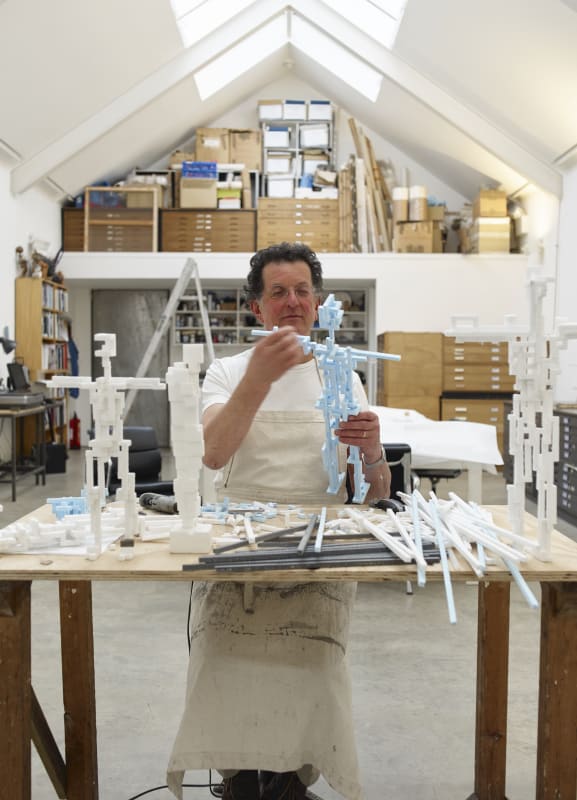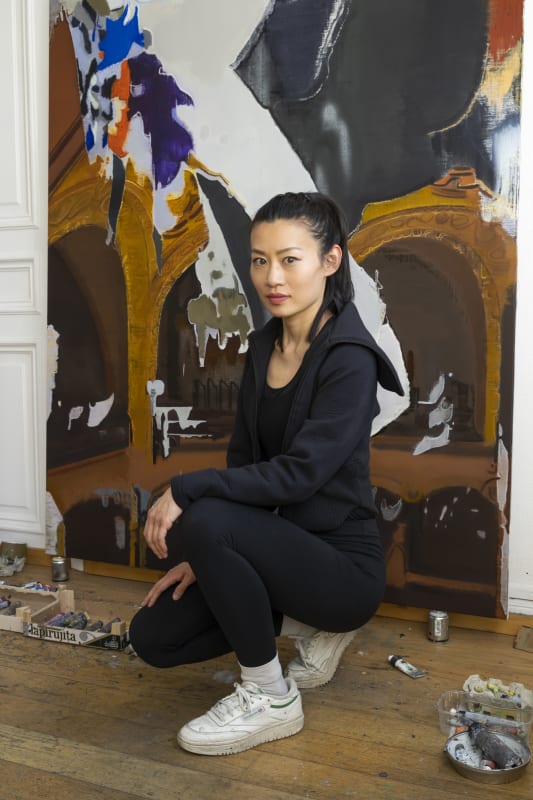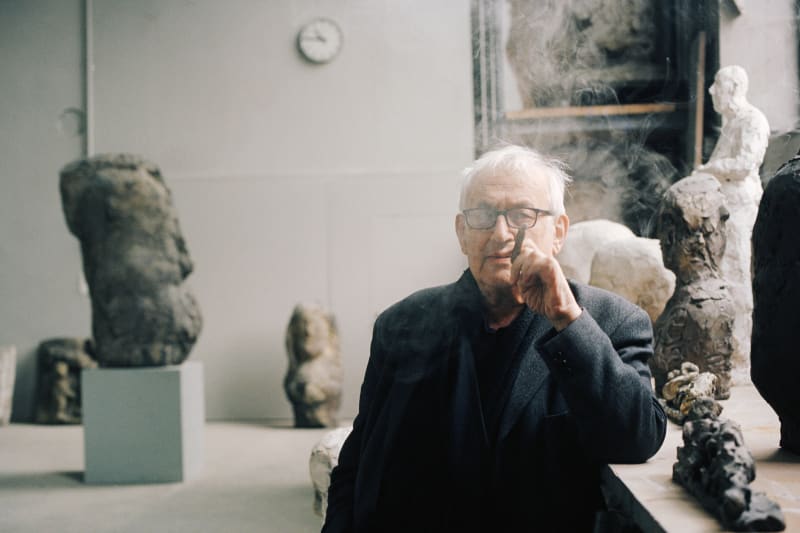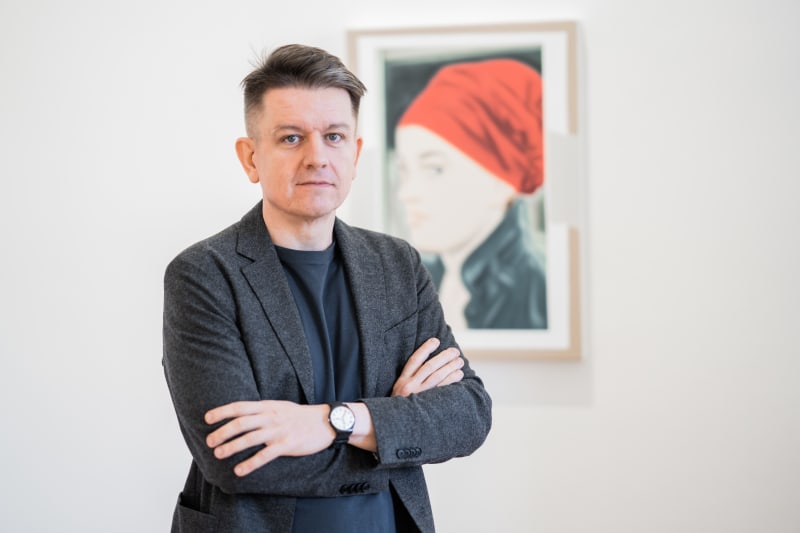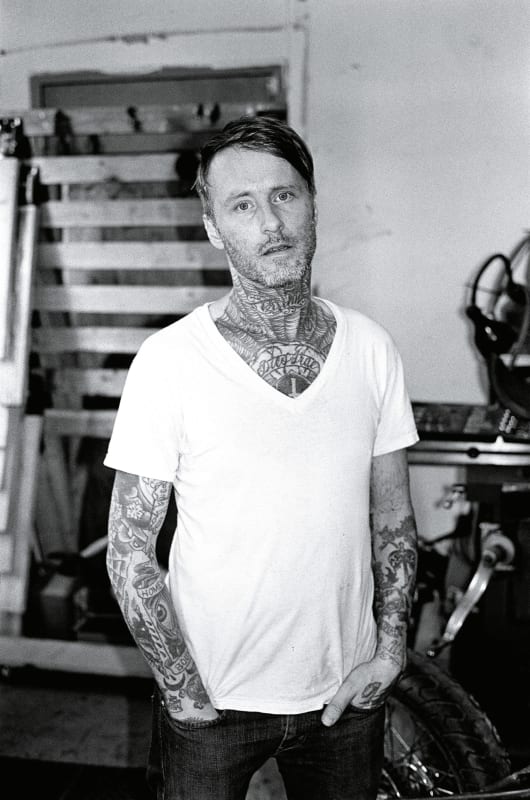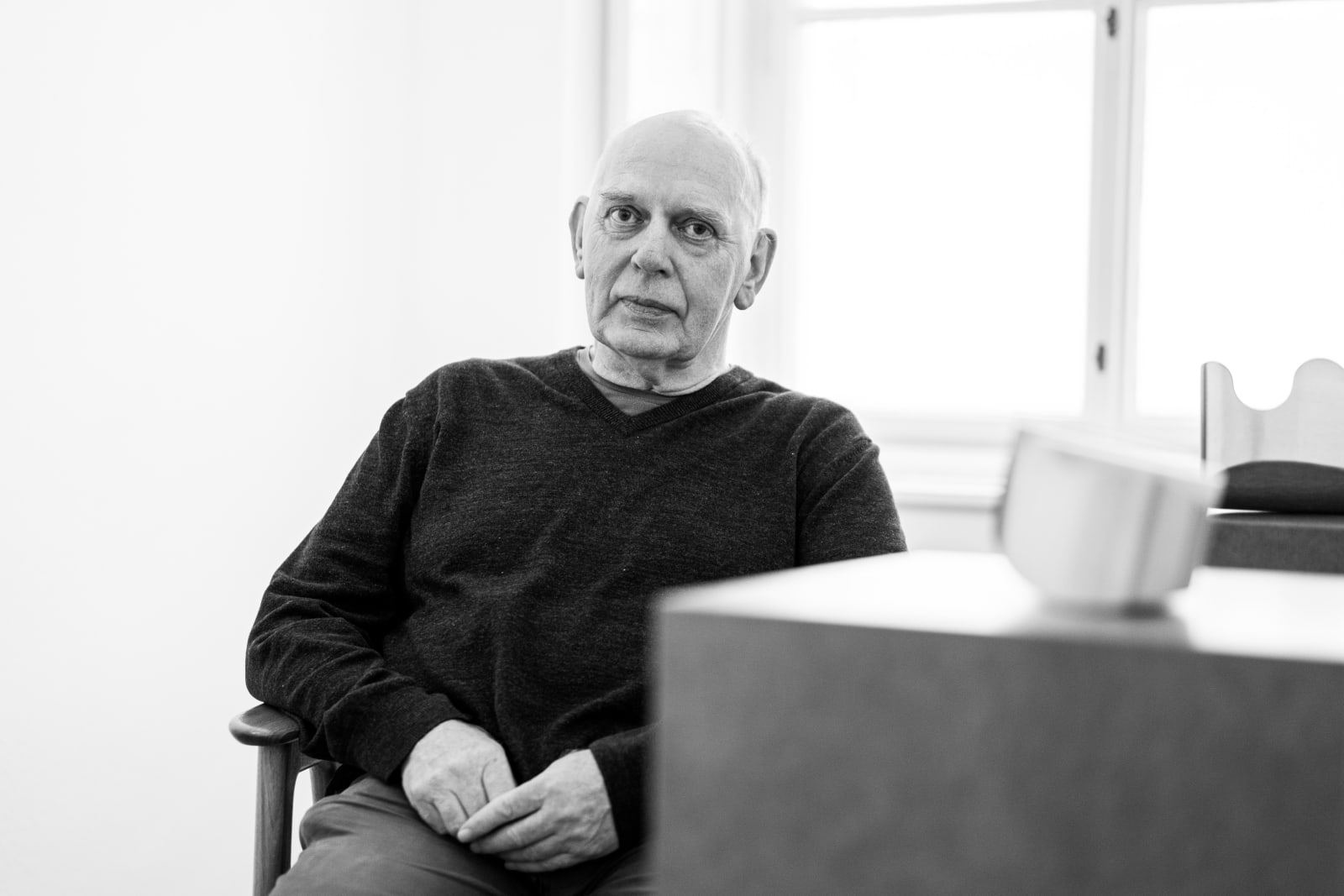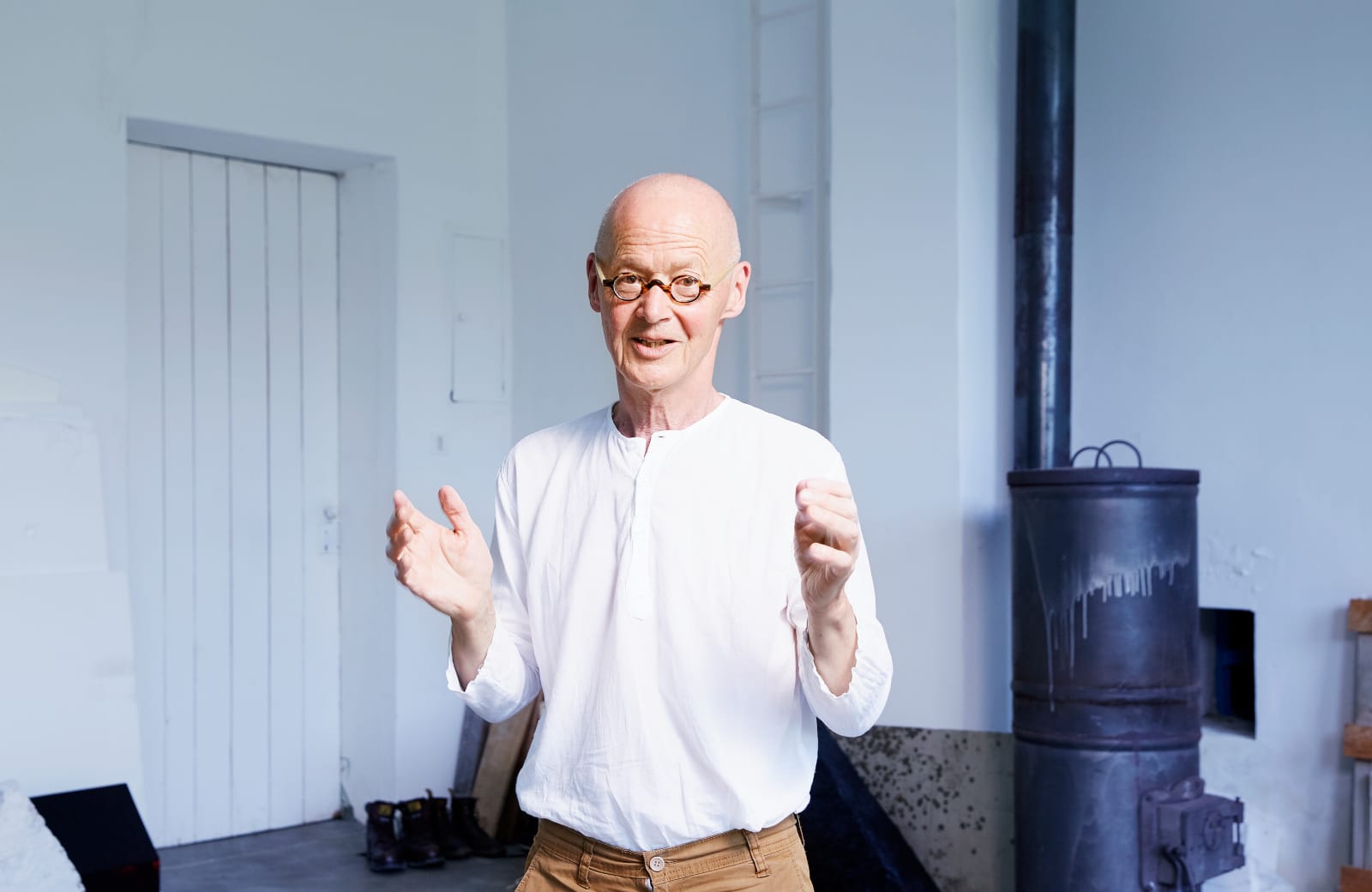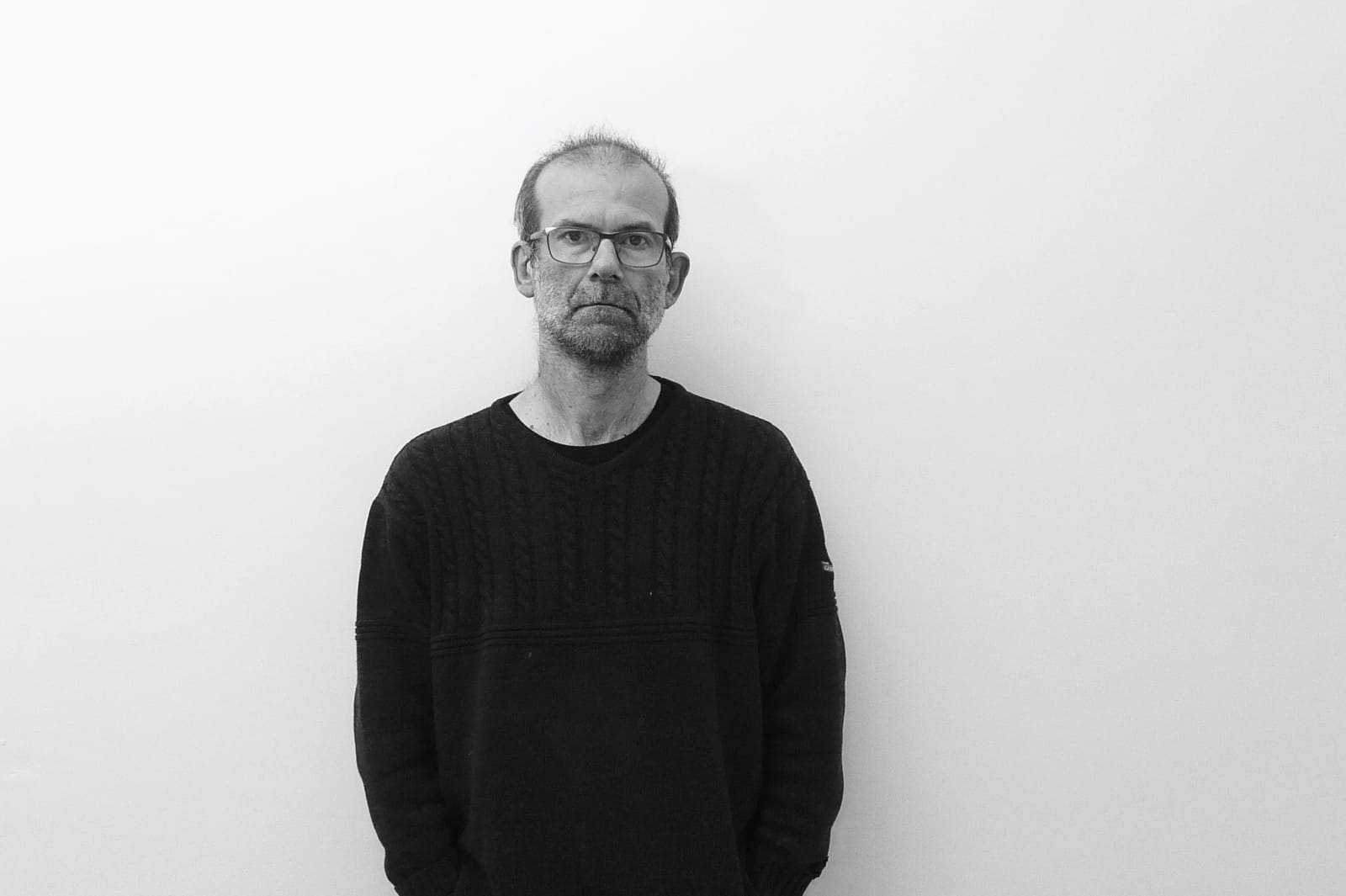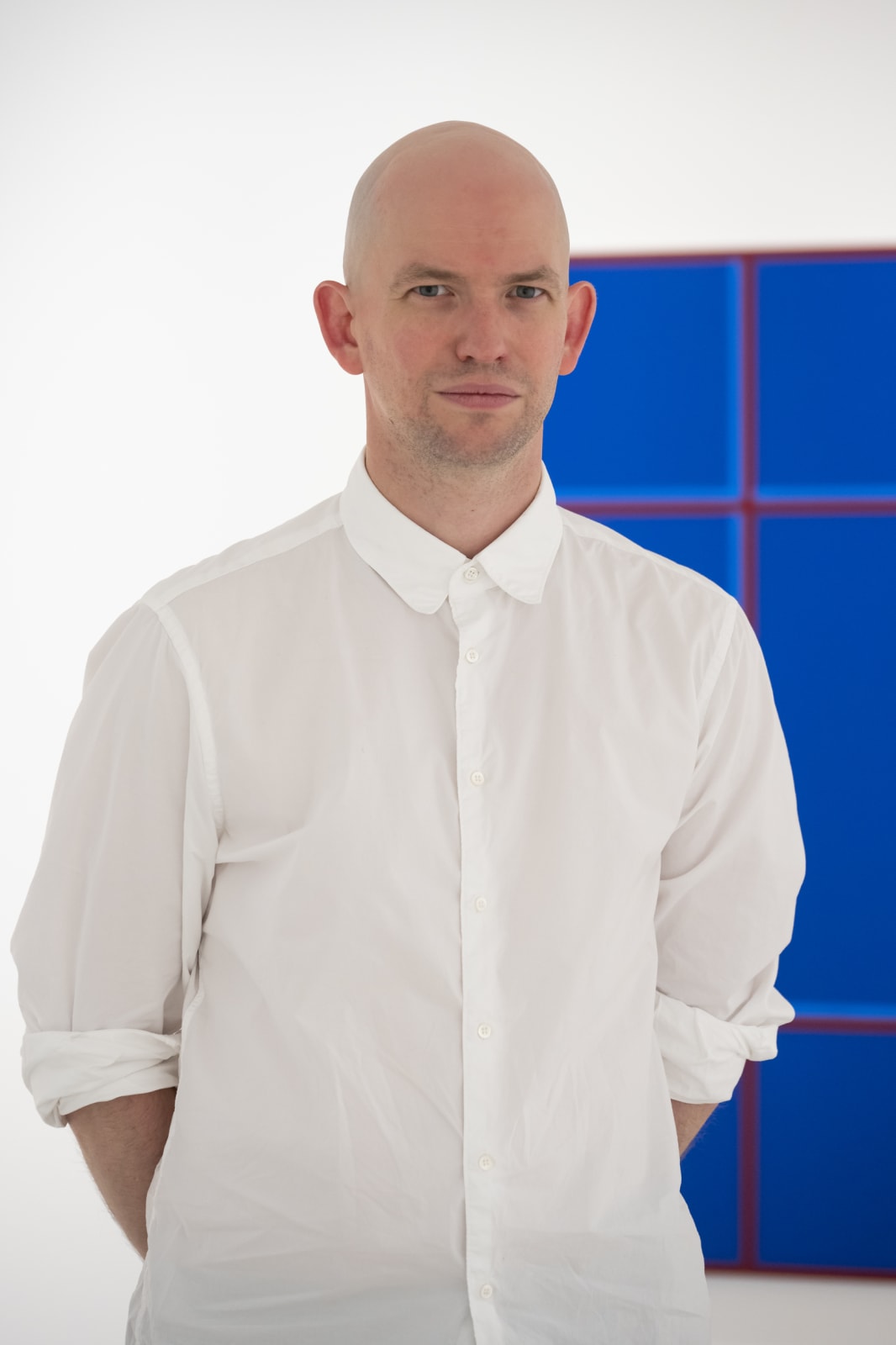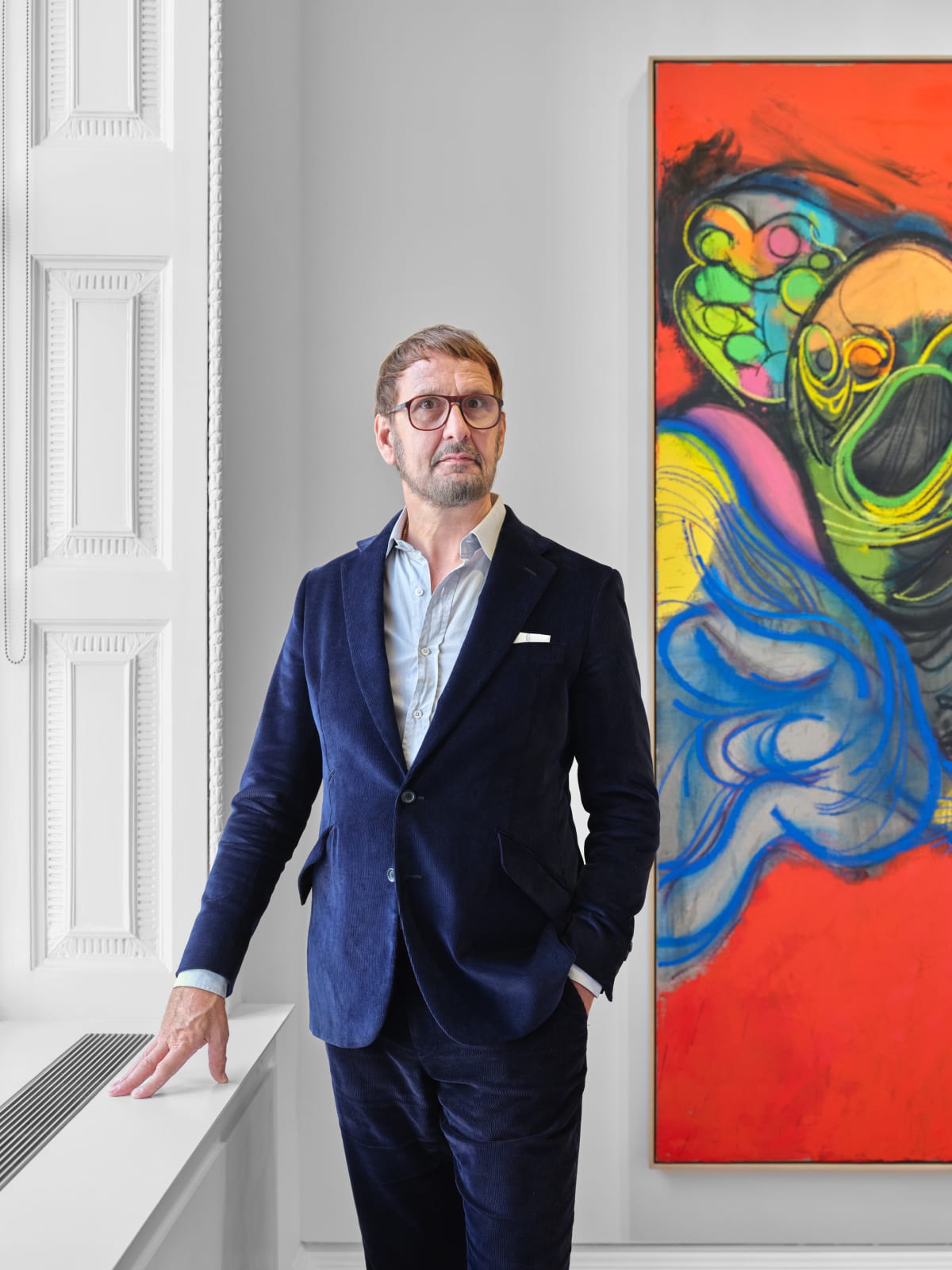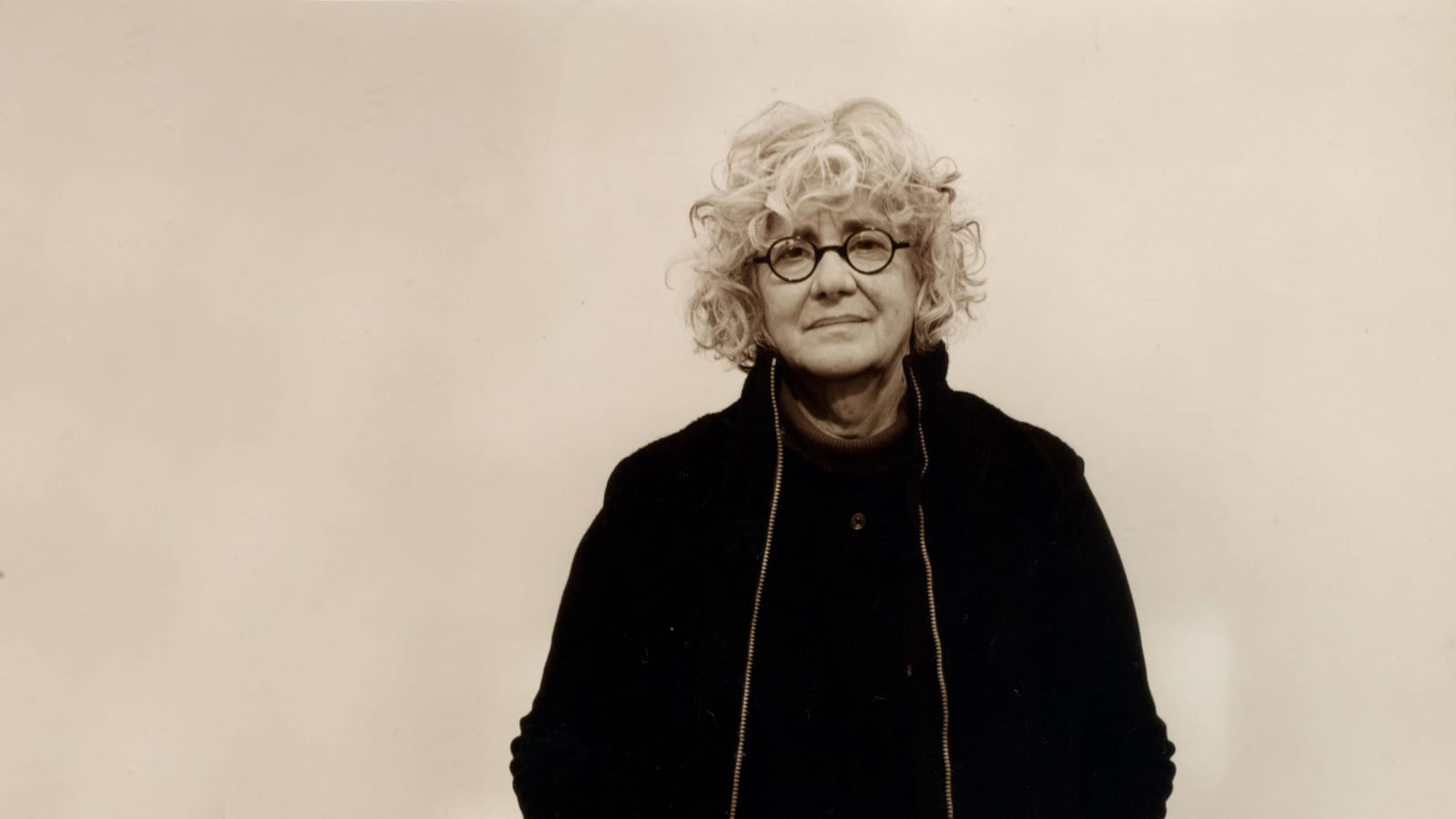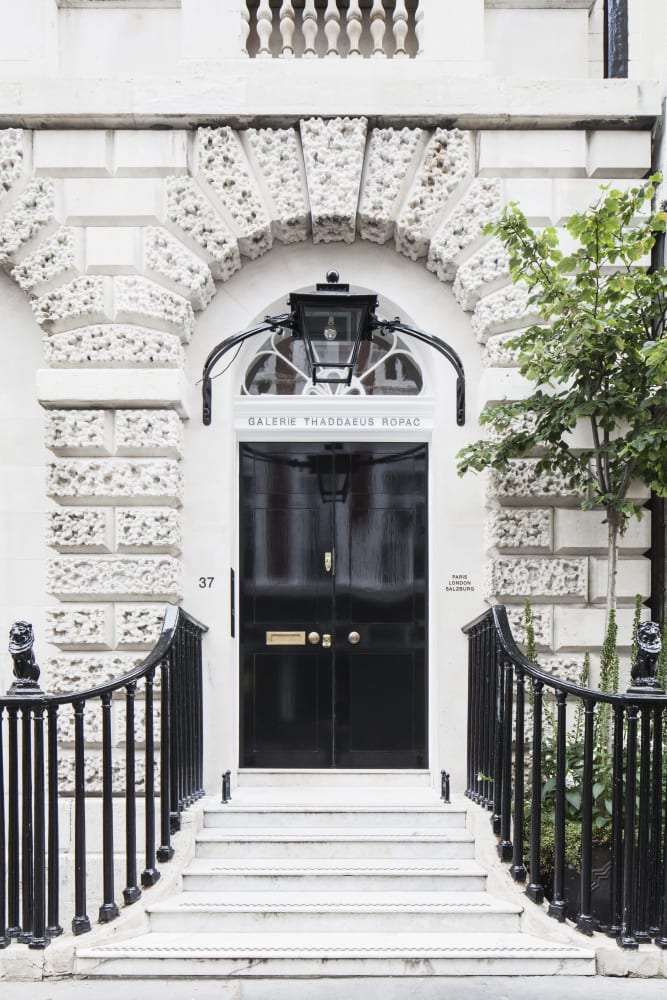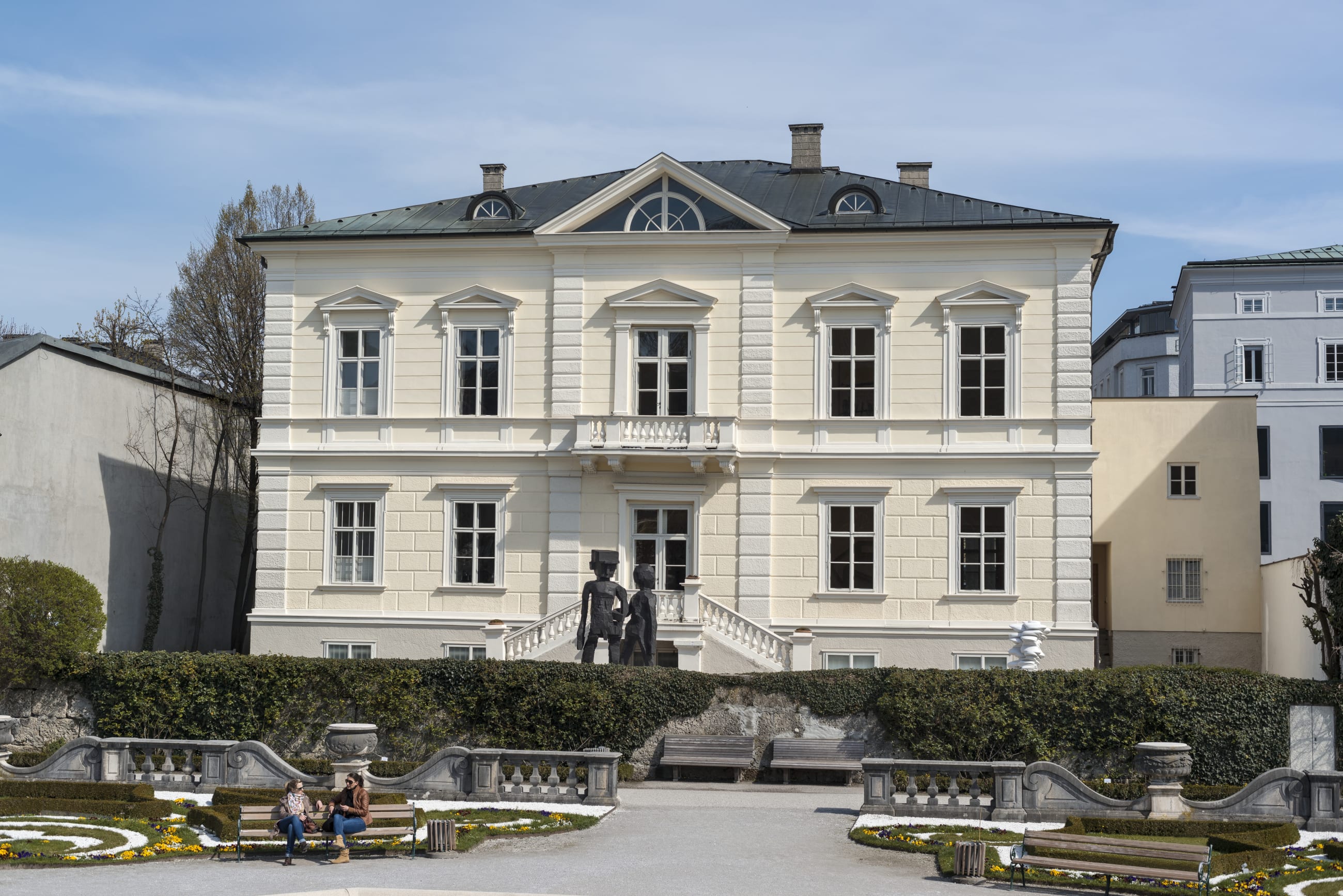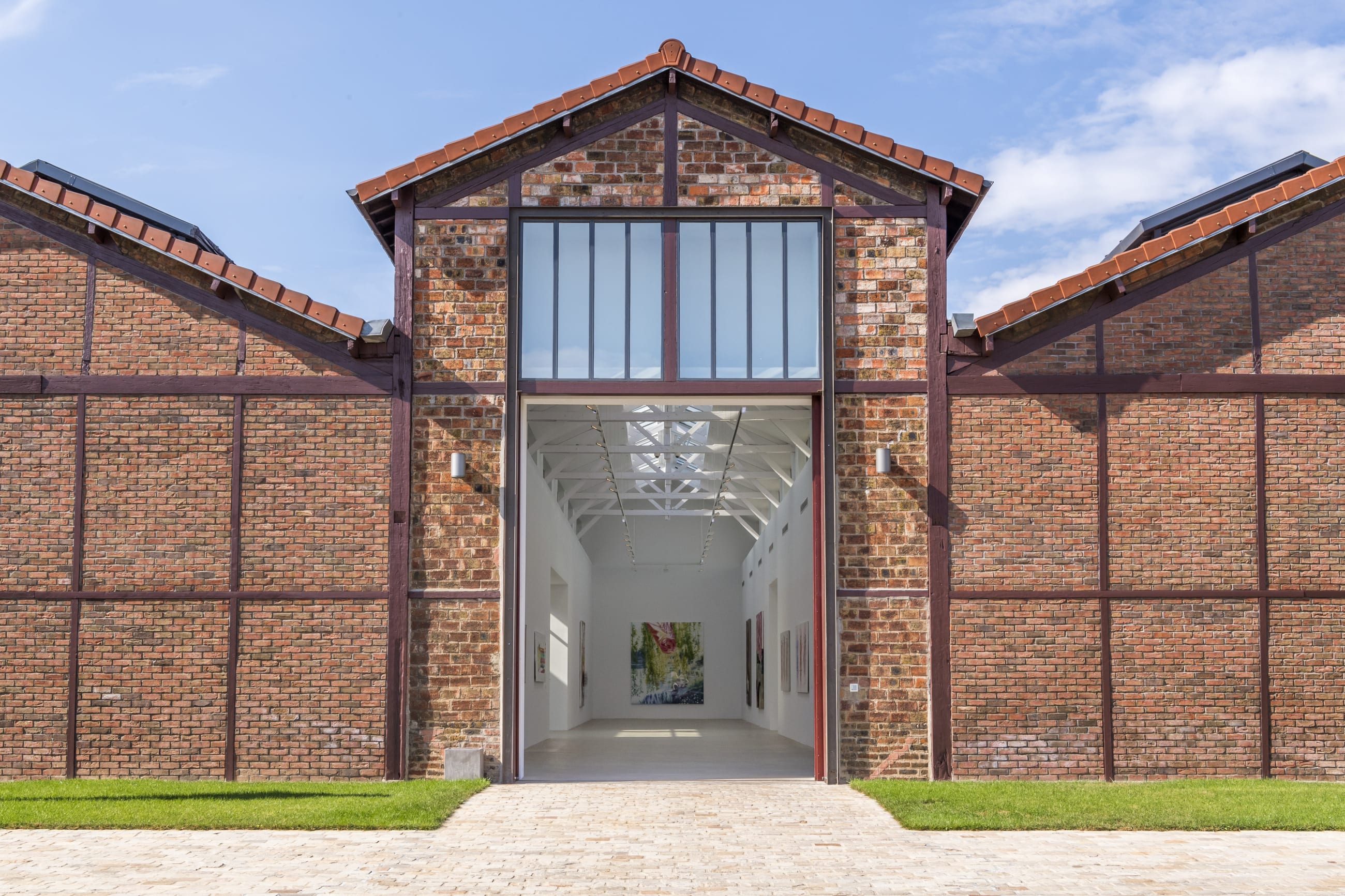Following Hans Josephsohn’s landmark retrospective at the Musée d’Art Moderne de Paris last year – the artist’s first in France – this exhibition presents a selection of works retracing 50 years of the Swiss sculptor’s practice, from 1952 to 2002. Spanning Josephsohn’s key sculptural typologies, the exhibition brings his tender, solitary early standing and reclining figures into conversation with the abstract volumes of his monumental late half-figures. Also on view is a presentation of the artist’s arrestingly intimate reliefs.
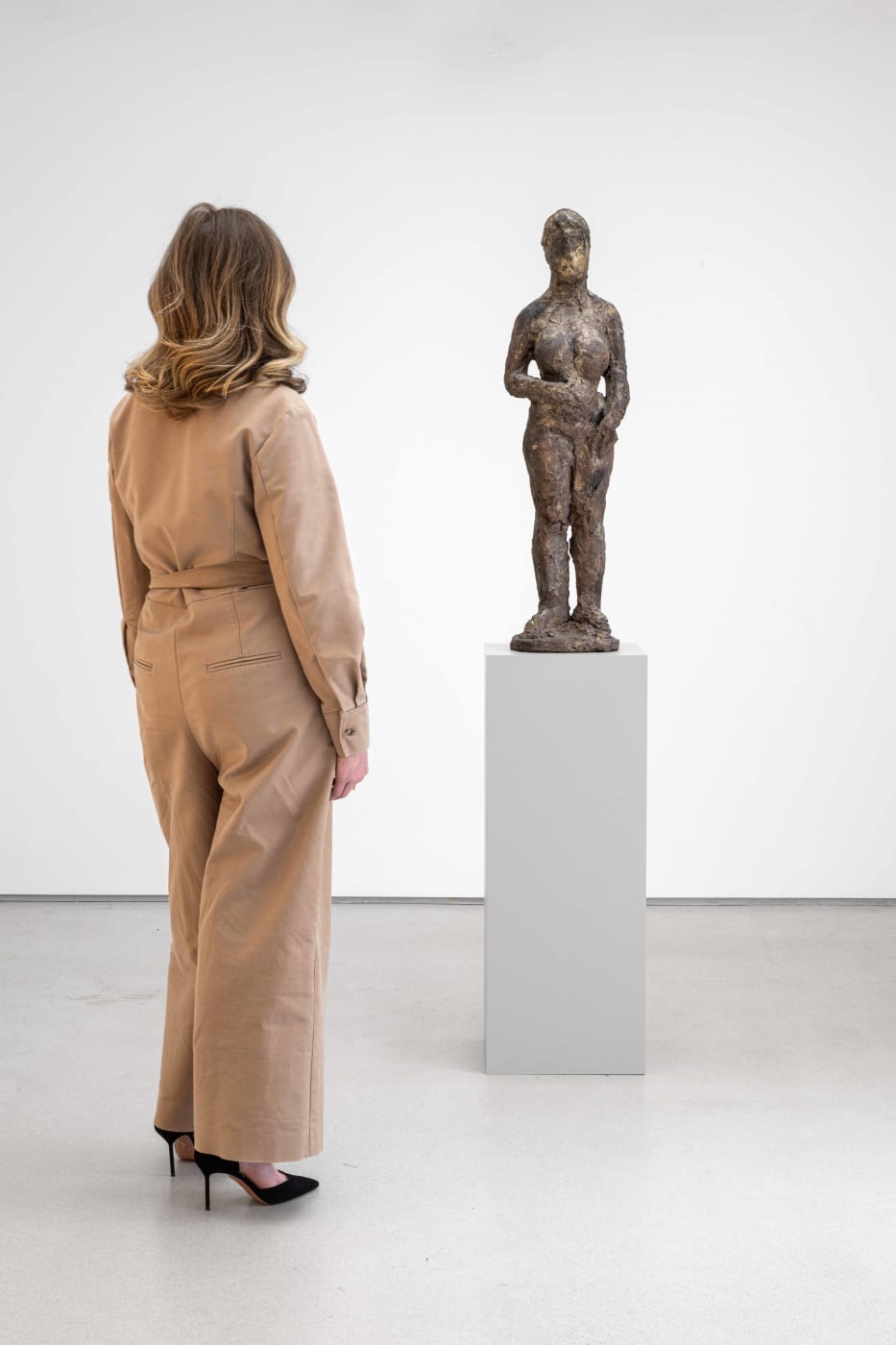
The exhibition gives a glimpse into Josephsohn’s stylistic development over five decades, shedding light on the sculptor’s shifting relationship to figuration and abstraction. In the 1950s, against the backdrop of post-war abstraction, Josephsohn remained attached to a purified figuration, as evidenced by Untitled (Ruth) of 1958.
Untitled (Ruth), 1958Brass
96 × 28 × 22 cm (37.8 × 11.02 × 8.66 in)
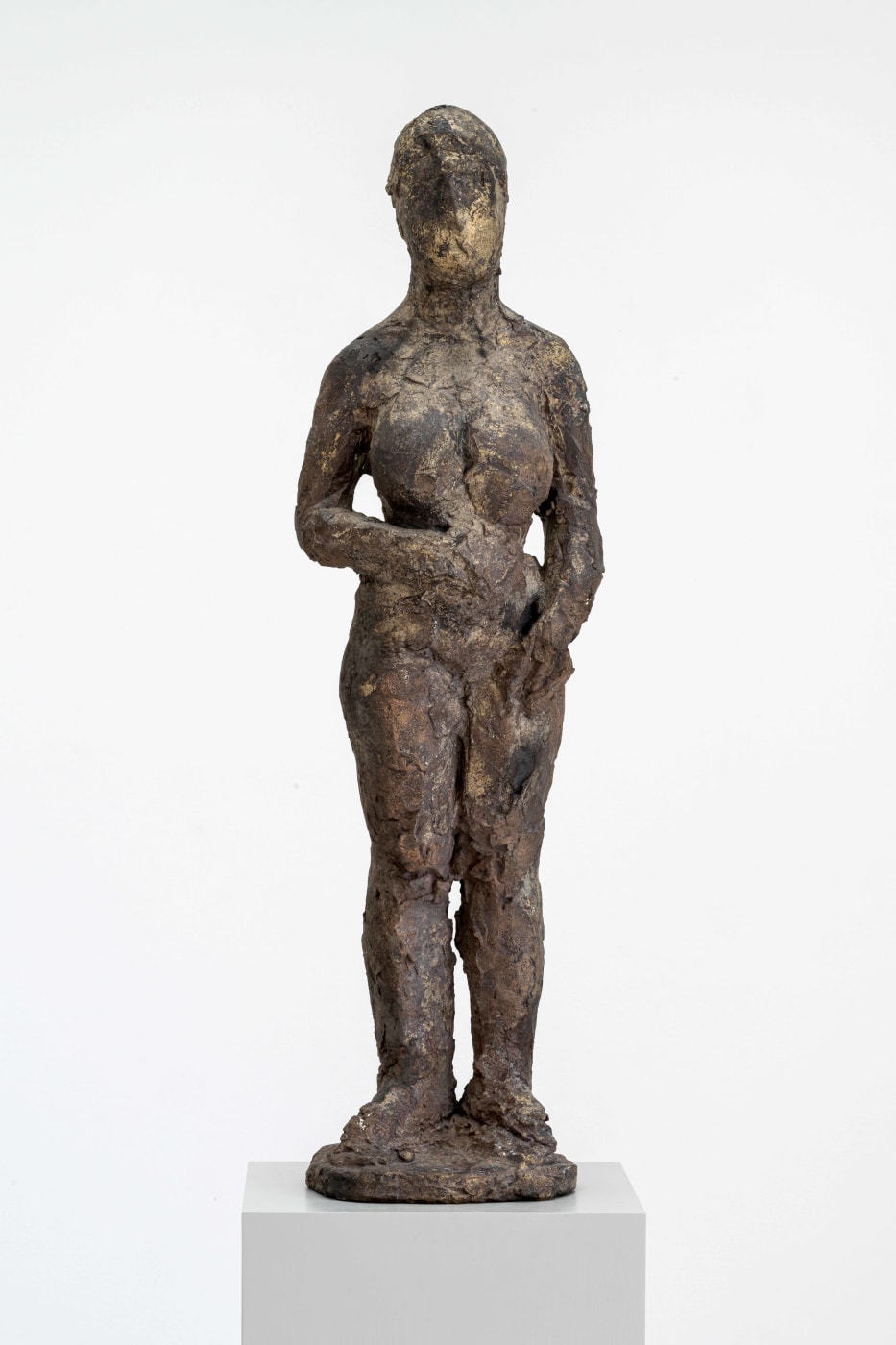
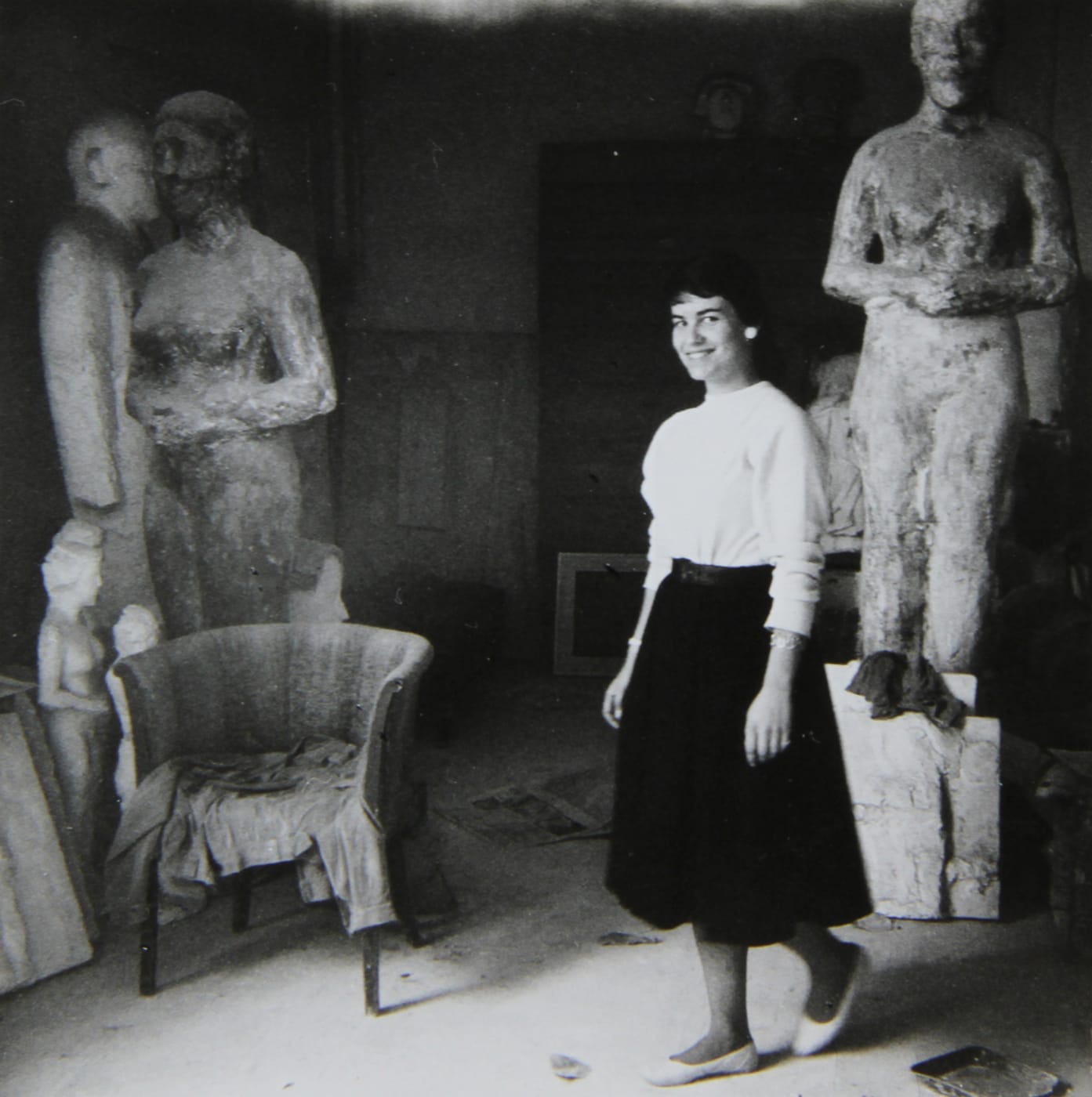
Hans Josephsohn’s interest in the character of people was of vital significance for his creative work as an artist. As abstract and far removed as his sculptures may be from their natural appearance, the starting point was always the direct individual opposite him. — Ulrich Meinherz, Managing Director of the Kesselhaus Josephsohn, St. Gallen
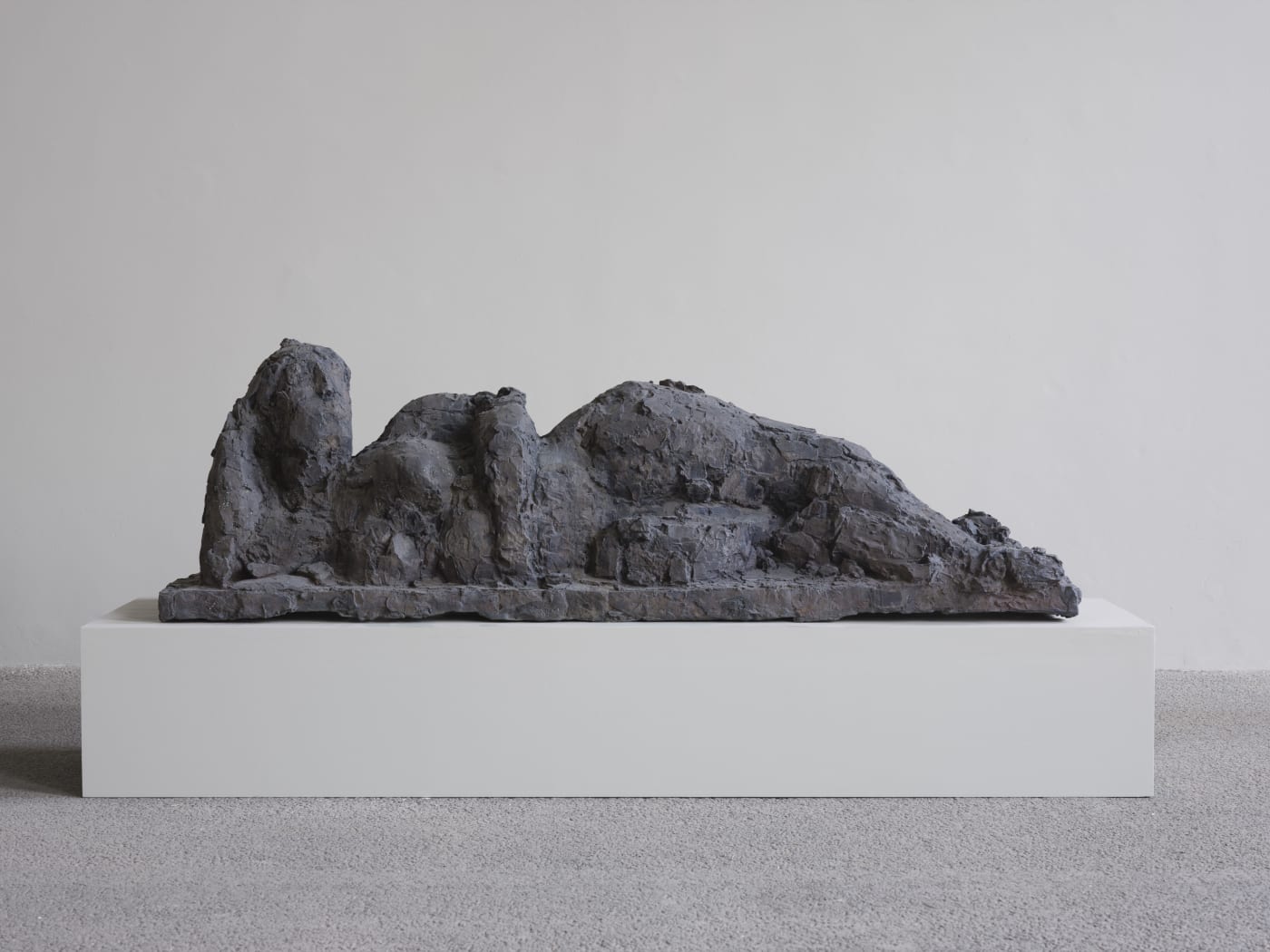
Throughout the 1960s and 1970s, Josephsohn’s early figures gained in mass and in the raw, haptic, roughly finished quality of their surfaces, exemplified by the 1971 reclining figure that commands the surrounding space: lonesome and stoic, and yet quietly elegant.
Untitled, 1971Brass
66 × 218 × 59 cm (25.98 × 85.83 × 23.23 in)

The work oscillates between the suggestion of a recumbent figure and that of a craggy landscape. Josephsohn rehearsed the classical motif of the reclining nude from 1965 to the 2000s. In his own words, ‘I remember my girlfriend was lying in a particular way in bed, she propped herself up, that appealed to me, and I thought, “I would like to make something similar one day”.’ As art critic Jackie Wullschläger writes, these works ‘retain a voluptuous languor as they develop into undulating semi-abstractions, rising and falling like mountains and valleys.’
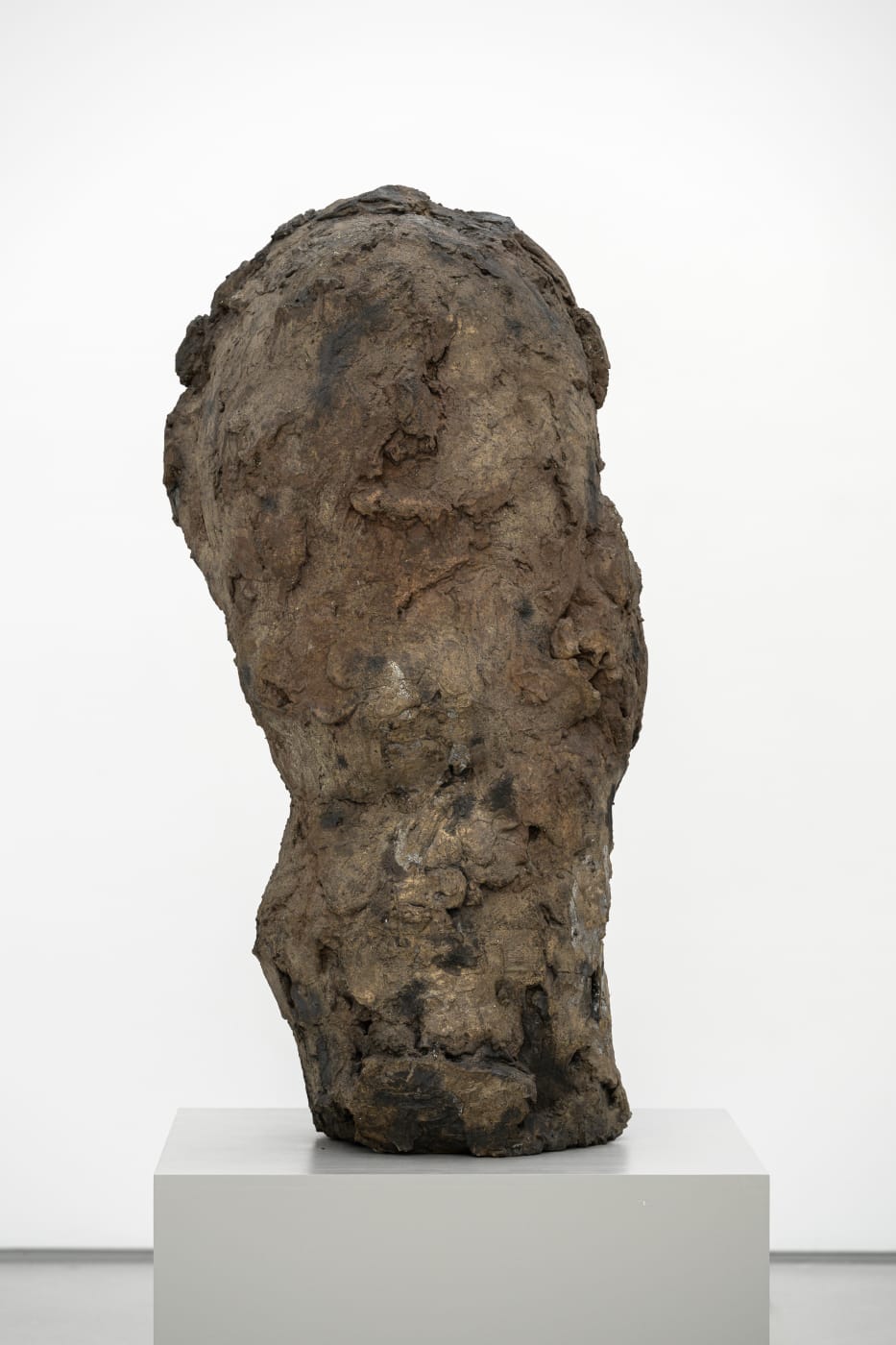
Around this recumbent figure is presented a cluster of Josephsohn’s half-figures, an expansive typology of work he commenced in the 1980s. In early works from the series, the sculptor clearly articulated the half-figures’ head and shoulders as distinct elements, however, gradually over time, the formal definition between the two parts dissolved as he began to produce more abstract forms, as evidenced by Untitled (1994).
Untitled, 1994Brass
143 x 70 x 55 cm (56.3 x 27.56 x 21.65 in)

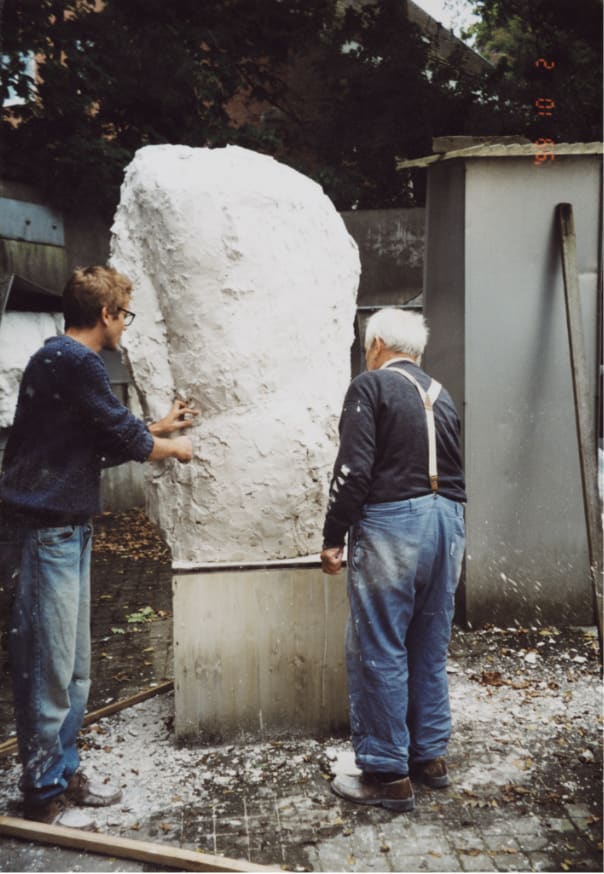
Josephsohn’s formal experimentation was facilitated by his use of plaster, whose malleability allowed him to keep reworking his sculptures as he modelled them, adding and removing volume in the process. Fellow sculptor William Tucker has written: ‘What moves me most with Josephsohn is his persistence, his patient devotion to the everyday task of building sculpture with the humblest of materials – with small amounts of plaster added over time, hourly, daily, every month and every year of his life.’
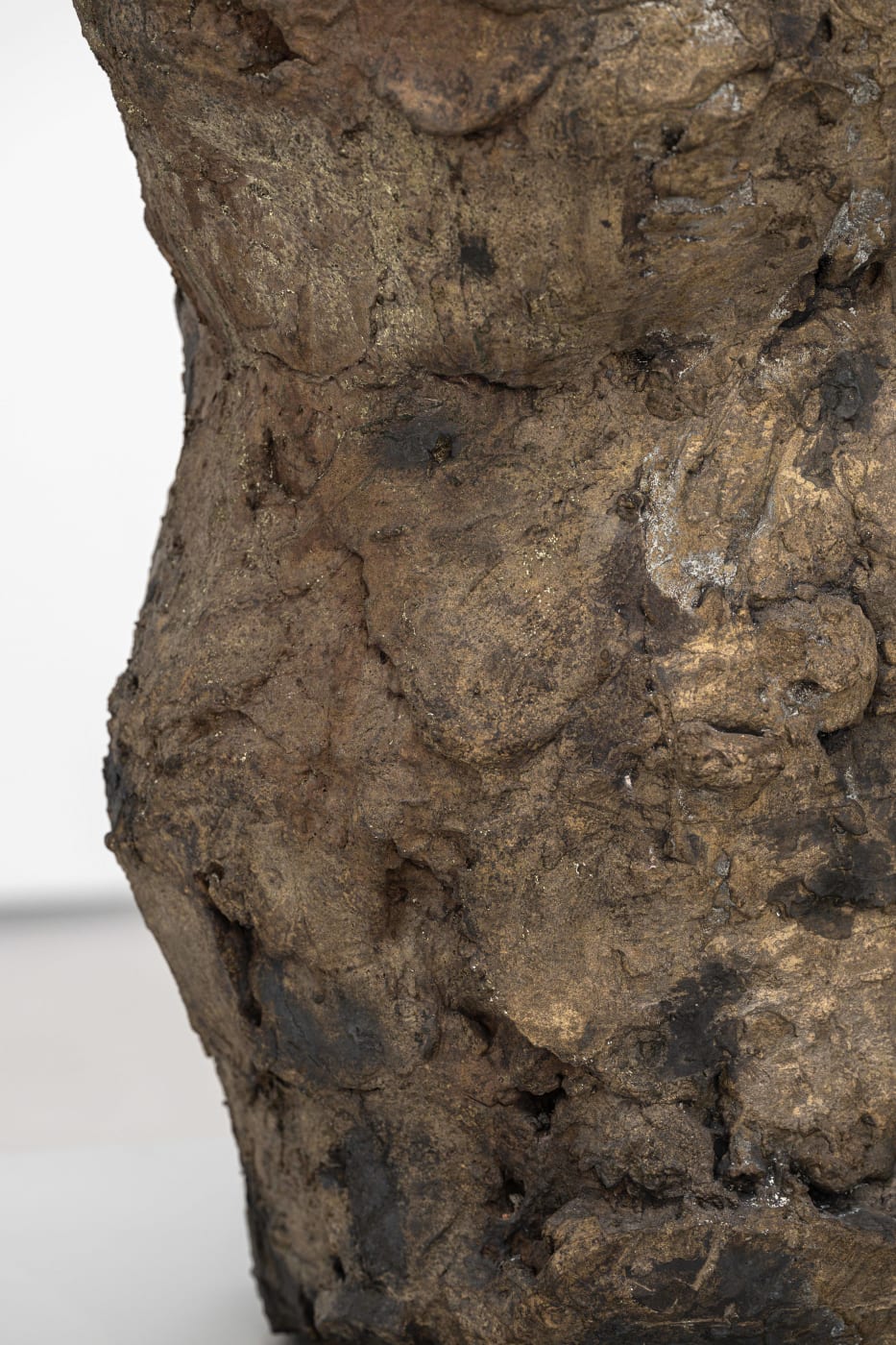
It is as if they came uneasily into being, these resisting, insistent, crude, and vulnerable figures. Static and permanent in their weighty materiality, they are also restless. Their agitated surfaces, vital and alert with the imprint of the artist’s hand, sometimes suggest intimacy, tender tactility; sometimes, where Josephsohn has cut away with an axe, they are jagged and flayed. — Jackie Wullschläger, art critic
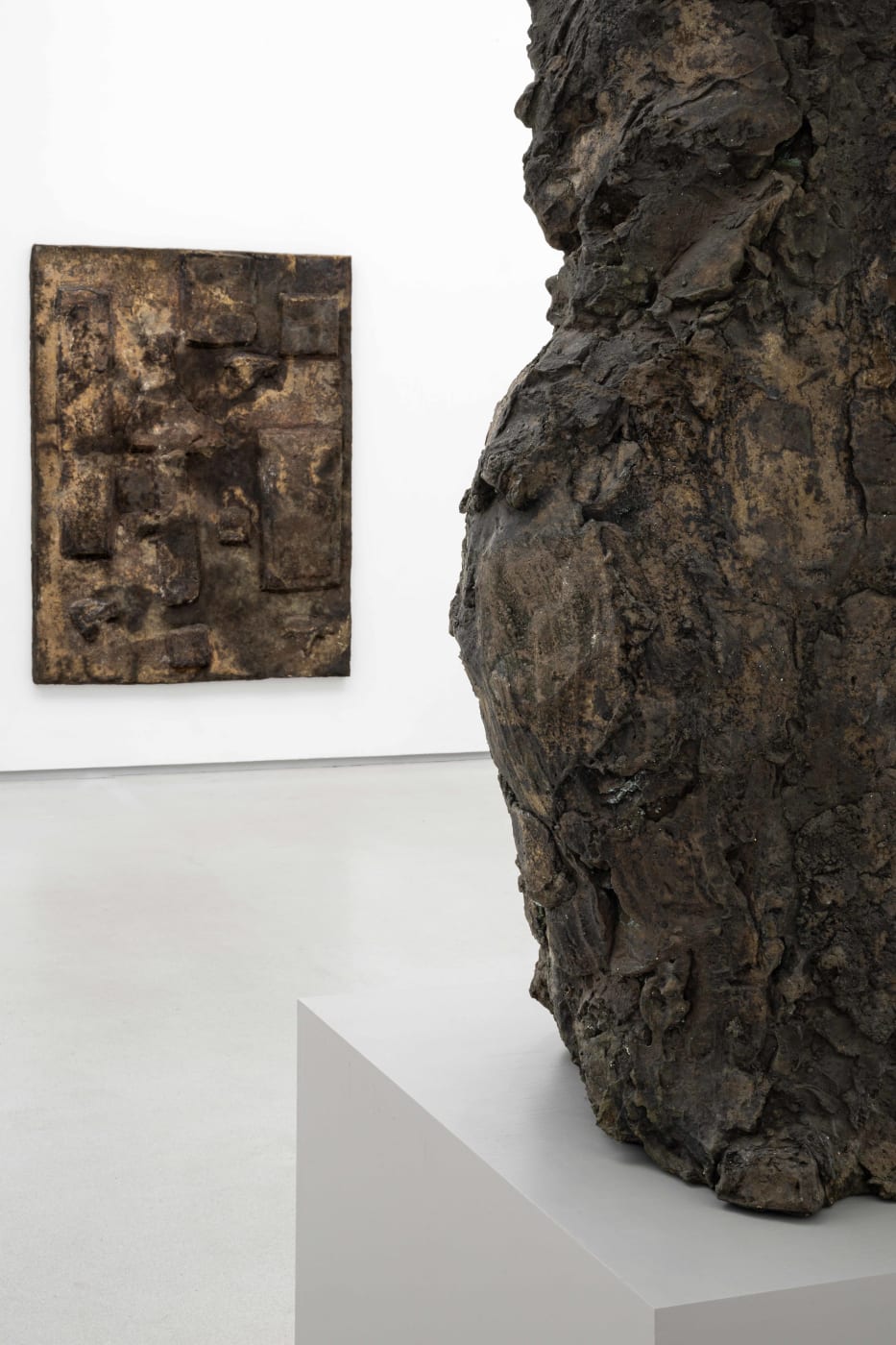
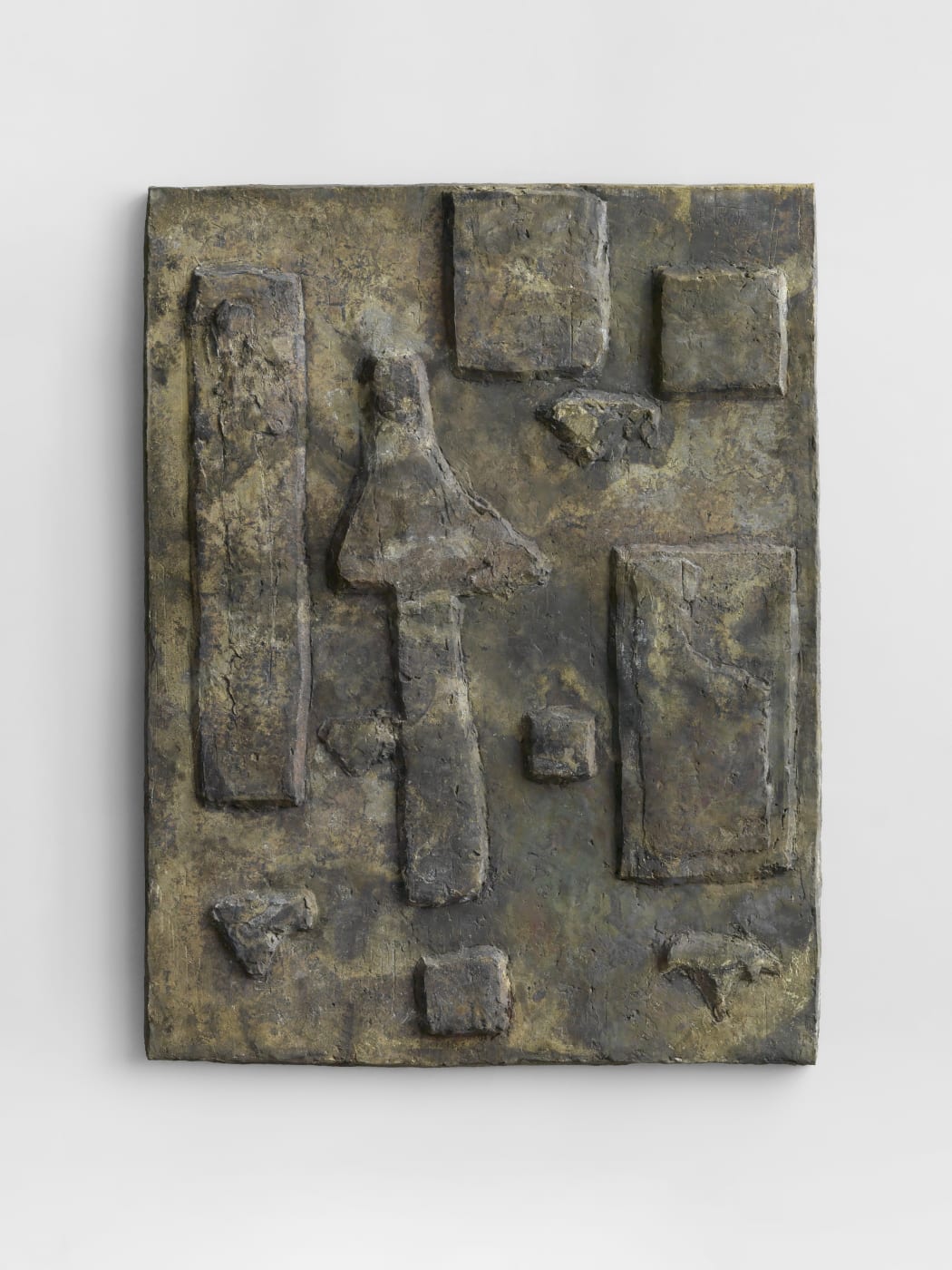
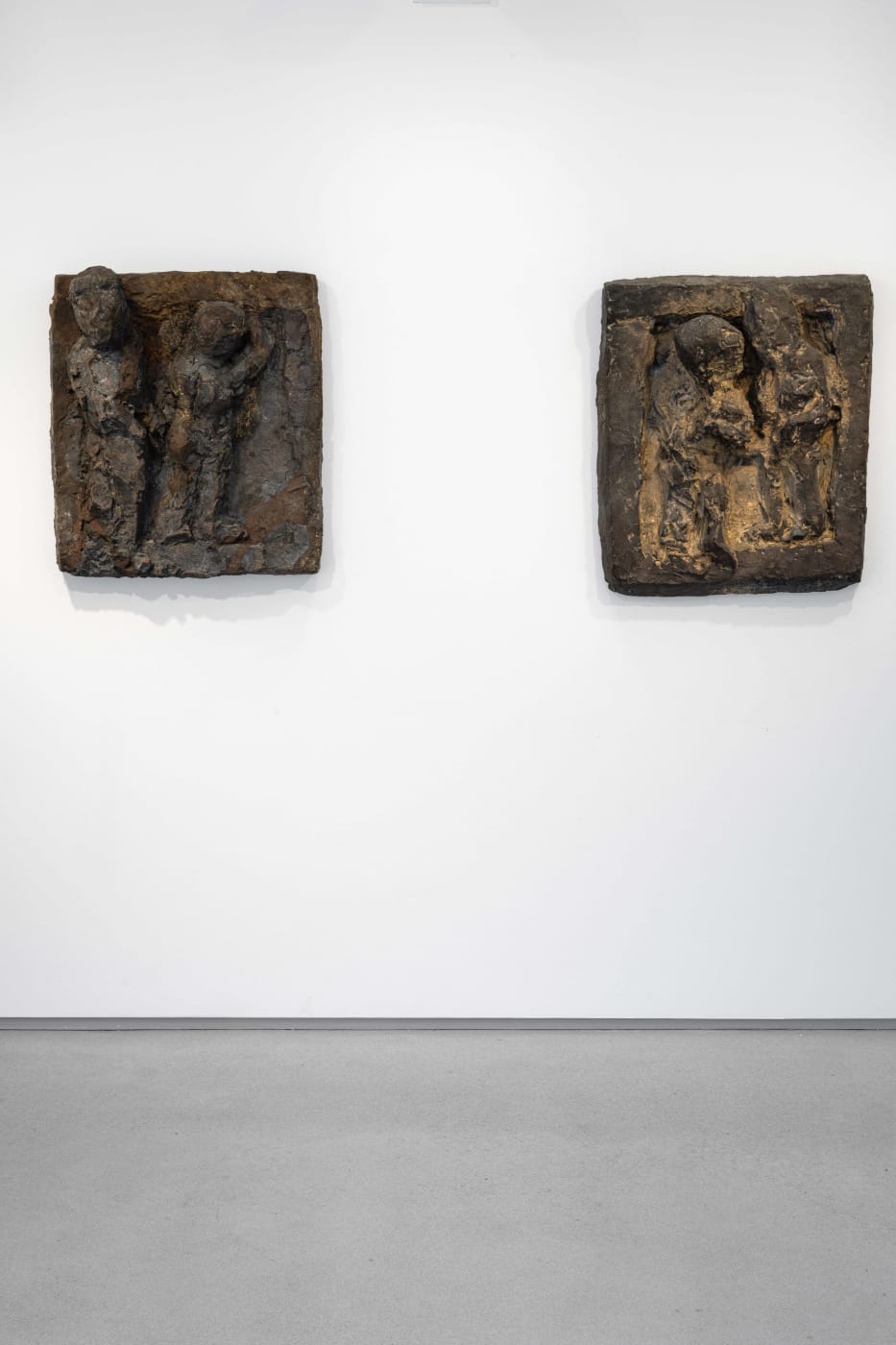
As his relief practice progressed, Josephsohn brought volumes and elements forth in arresting haut-relief, digging into the matter directly with his hands, with the excavated niches formed in the process creating shadowy, dynamic grounds for his reflections on personal relationships. In Untitled (1963), two distinctly human figures seem to lurch out of the relief, re-enacting one of the sculptor’s experiences of human connection.
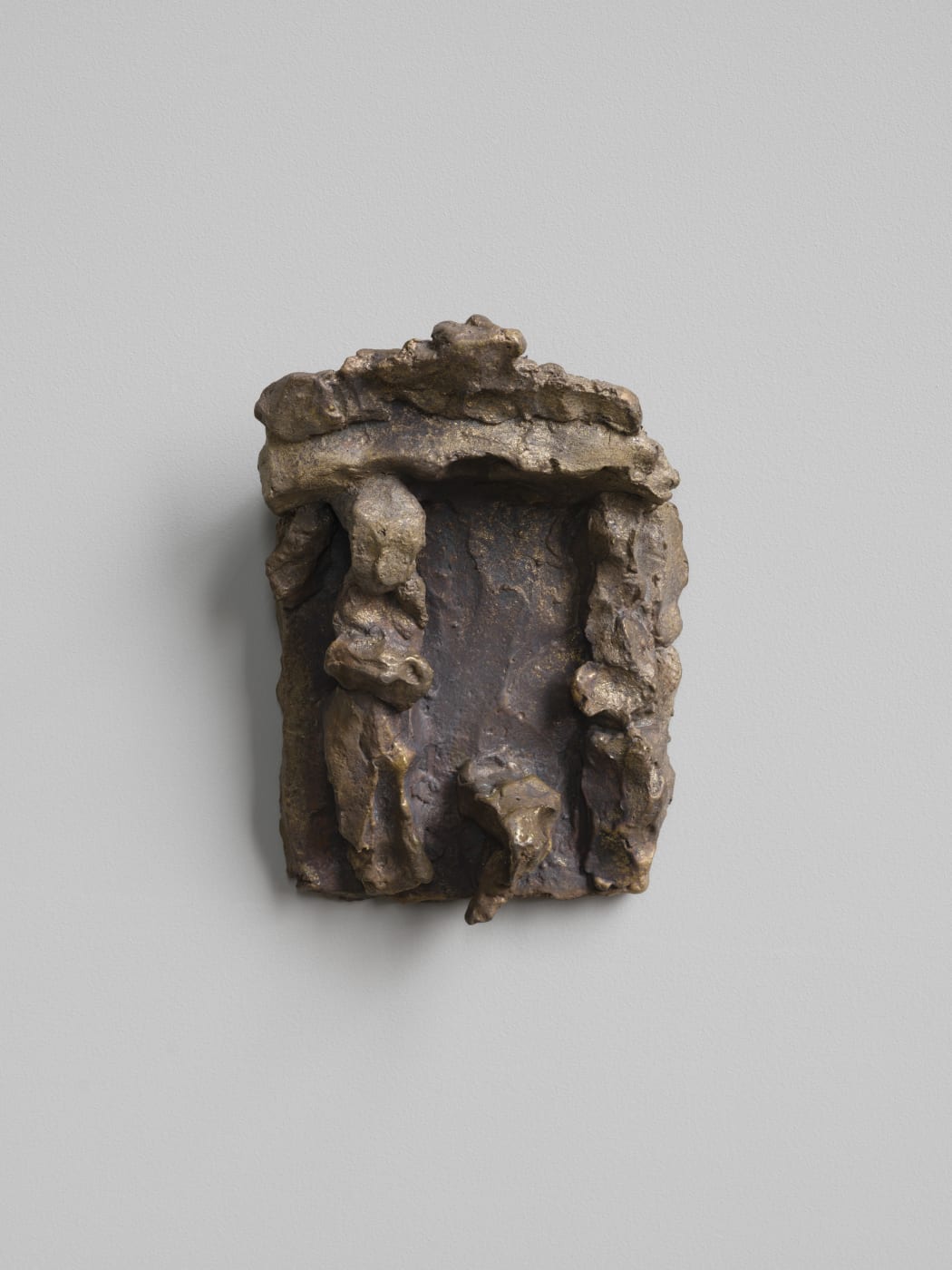
From the 1970s onwards, Josephsohn integrated more personal motifs into his reliefs, which became ‘constellations of affection and aversion,’ as Peter Märkli has remarked. He conceived of the reliefs as three-dimensional sketches of his daily life, which he mostly spent in the studio. The sculptor frequently depicted himself as a standing figure, as in Untitled (1970/75). Punctuating the walls of the space, the reliefs take on a frieze-like, sequential aspect; individually, many depict two or more figures, lending them a narrative quality.
Untitled, 1970/75Brass
22 x 15 x 9.5 cm (8.66 x 5.91 x 3.74 in)
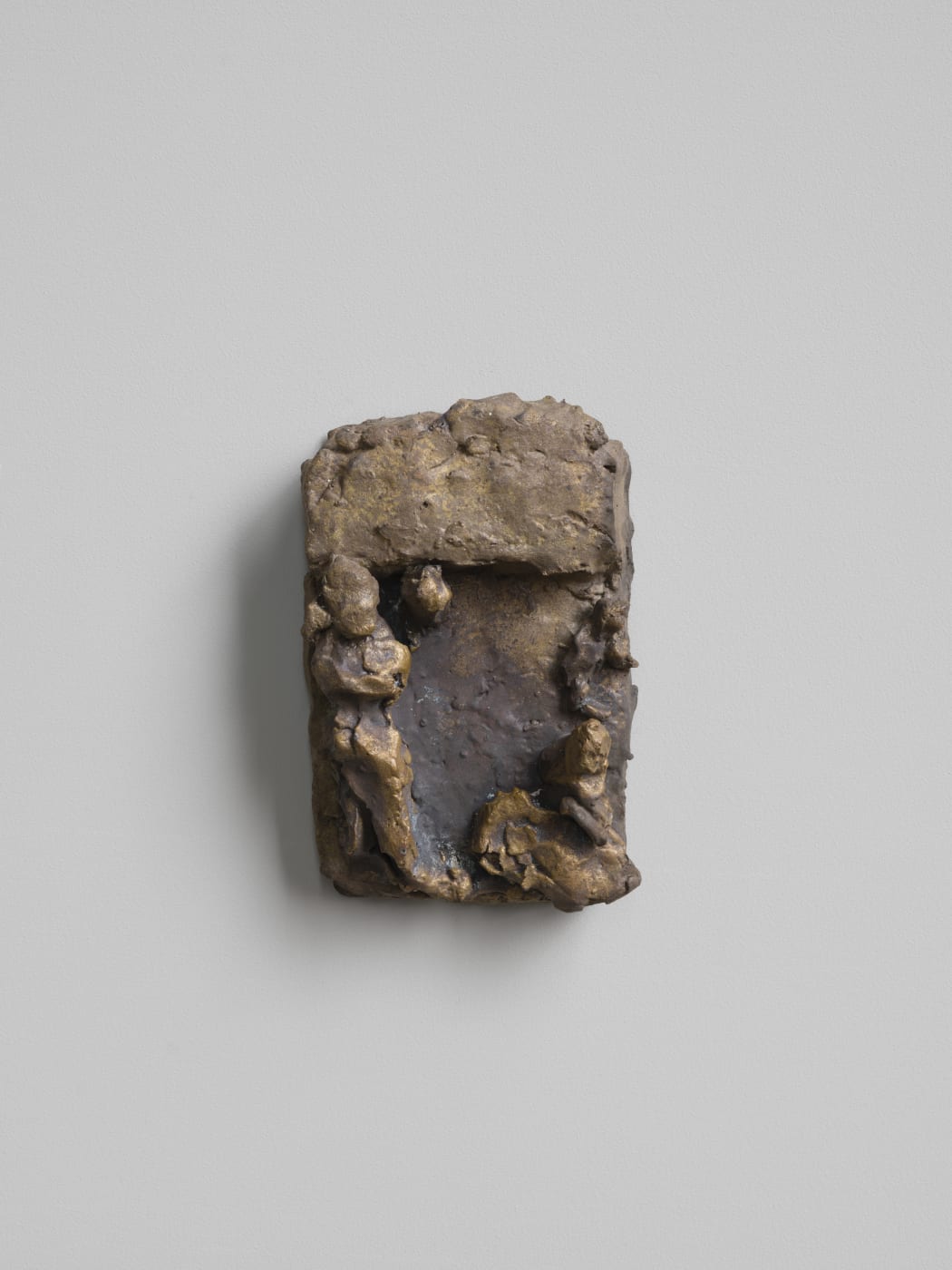
Josephsohn could express feelings, desires, and conflicts in his reliefs in a way that he could not in his seated and reclining figures and half-figures. The relief thus creates its own language. — Udo Kittelmann, curator
The miracle of Josephsohn’s work is that it has all this ancient look, even as it bids for modernity in its peculiar power of making the indefinite monumental. — Jackie Wullschläger
Josephsohn’s sculptural practice is deeply engaged with the flesh, the substance, the brawn of the body, but also with its ineffable humanity. The exhibition invites visitors into an encounter, in breathtaking stillness, with at once the most corporeal and the most sublime qualities of Josephsohn’s subjects. Working and reworking until, as the artist put it, ‘only the core of the thing was left’, Josephsohn is remarkable for his mastery in giving form to the human condition itself.






















